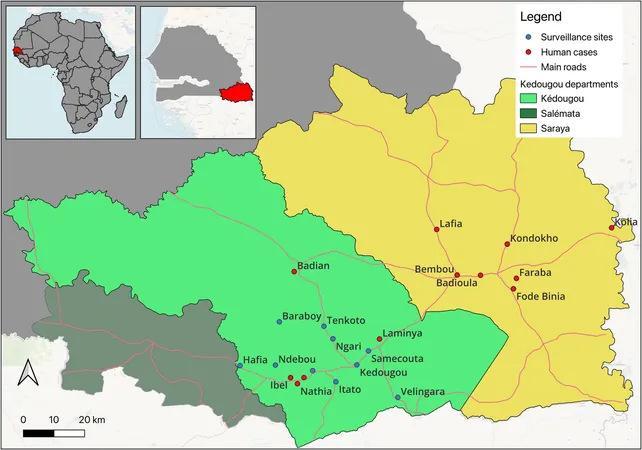
The Murchison Widefield Array: A Giant Leap in Radio Astronomy!
2025-09-05
Author: Ming
Revolutionizing the Skies: Murchison Widefield Array's Massive Expansion
In an exciting breakthrough for radio astronomy, the Murchison Widefield Array (MWA) in Western Australia has officially doubled its capacity! Recently completing Phase III, this innovative observatory is set to delve deeper into cosmic mysteries, from alien signals to the light of the universe's first stars.
Unconventional Design and Groundbreaking Features
Unlike traditional radio telescopes that use massive dishes, the MWA employs an array of small dipole antennas strategically spread across 30 square kilometers of the Australian Outback, on land belonging to the Wajarri Yamaji indigenous community. Phase II featured 4,096 antennas, but with the recent Phase III upgrade, this has skyrocketed to a staggering 8,192, significantly enhancing its data collection power.
Next-Level Data Processing: Meet the Supercomputer!
To handle the influx of new data, engineers have turbocharged the MWA’s computational capabilities with a cutting-edge correlator—an advanced supercomputer that merges signals from the antennas into detailed images. With this overhaul, the telescope’s data output has quadrupled, promising a wealth of new insights from the cosmos.
Unlocking the Secrets of the Early Universe
One of the thrilling research areas this upgrade is targeting is the Epoch of Reionization, a crucial period characterized by a universe dominated by neutral hydrogen, detectable through radio waves. Moreover, this increase in data will enhance MWA's already stellar capabilities in studying transients and heliophysics.
The Enigma of Odd Radio Circles
One particularly intriguing puzzle on the researchers' agenda is the mysterious Odd Radio Circles (ORCs). These faint emissions, previously unseen, have baffled scientists, especially a peculiar pair seemingly influenced by a nearby galaxy. With the enhanced capabilities of the MWA, astronomers are primed to gather more data, potentially unveiling the nature of these enigmatic signals.
Building Towards the Future: SKA and Beyond
Most importantly, MWA's expansion sets the stage for the upcoming Square Kilometer Array (SKA)—the next generation of radio observatories. Expected to feature an astonishing 131,000 dipole antennas spread across both Australia and South Africa, the SKA will dwarf even the upgraded MWA. However, with its $5.4 million facelift complete, the MWA shines as the leading radio telescope in the region for the next few years.
As the Murchison Widefield Array embarks on this new era, the universe’s secrets are more accessible than ever. Keep your eyes on the skies!







 Brasil (PT)
Brasil (PT)
 Canada (EN)
Canada (EN)
 Chile (ES)
Chile (ES)
 Česko (CS)
Česko (CS)
 대한민국 (KO)
대한민국 (KO)
 España (ES)
España (ES)
 France (FR)
France (FR)
 Hong Kong (EN)
Hong Kong (EN)
 Italia (IT)
Italia (IT)
 日本 (JA)
日本 (JA)
 Magyarország (HU)
Magyarország (HU)
 Norge (NO)
Norge (NO)
 Polska (PL)
Polska (PL)
 Schweiz (DE)
Schweiz (DE)
 Singapore (EN)
Singapore (EN)
 Sverige (SV)
Sverige (SV)
 Suomi (FI)
Suomi (FI)
 Türkiye (TR)
Türkiye (TR)
 الإمارات العربية المتحدة (AR)
الإمارات العربية المتحدة (AR)